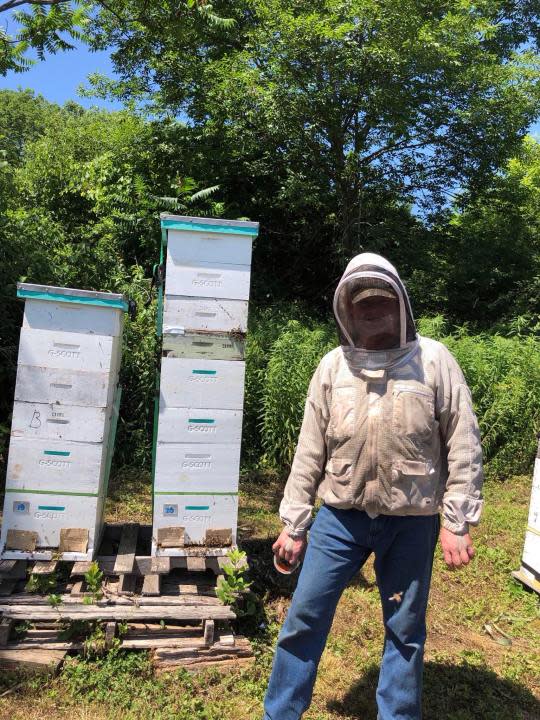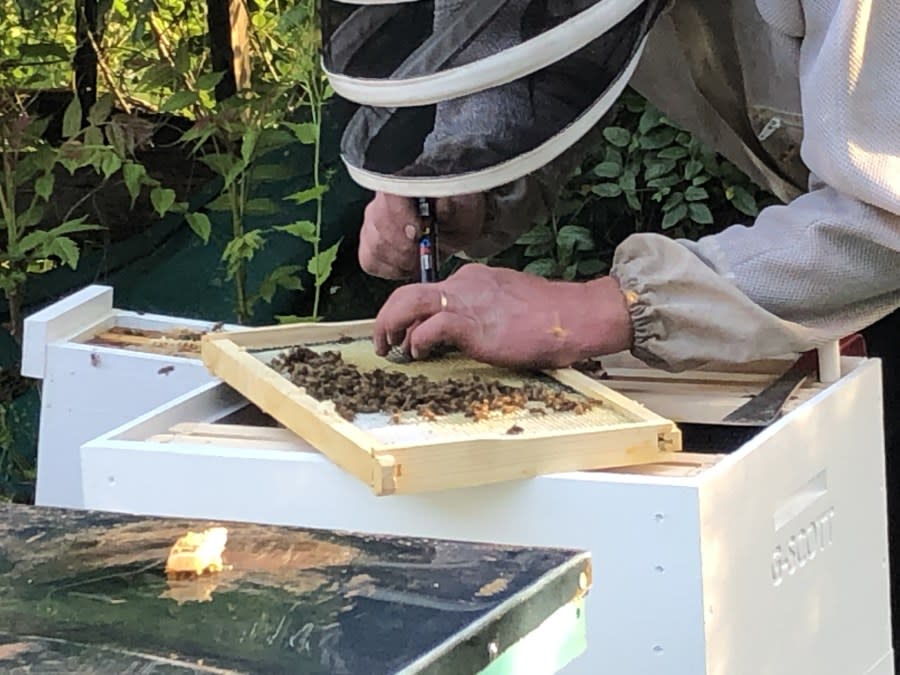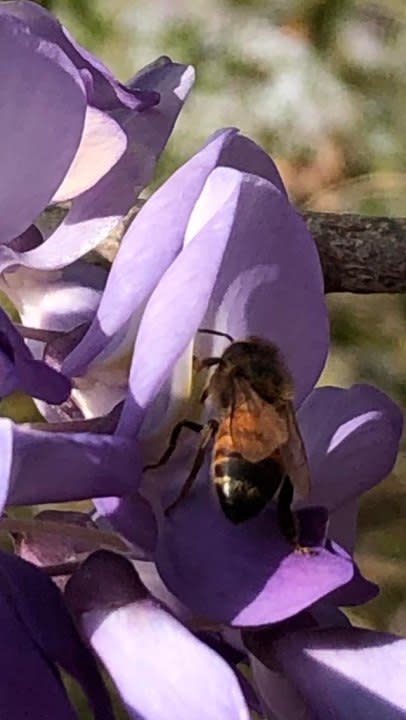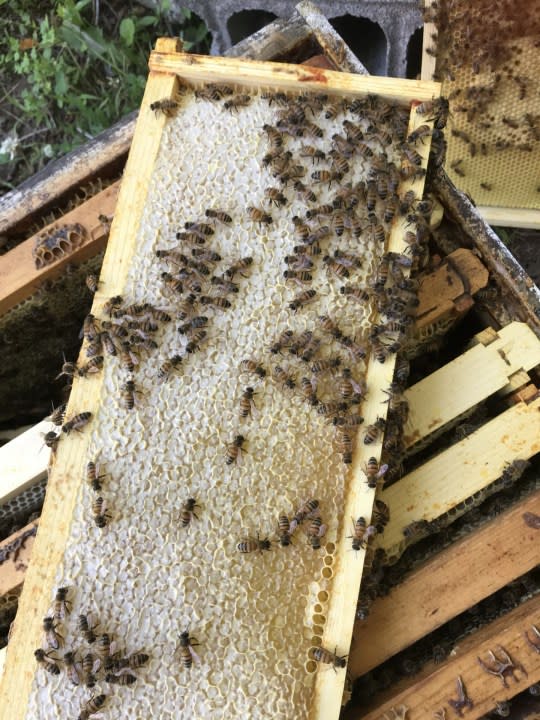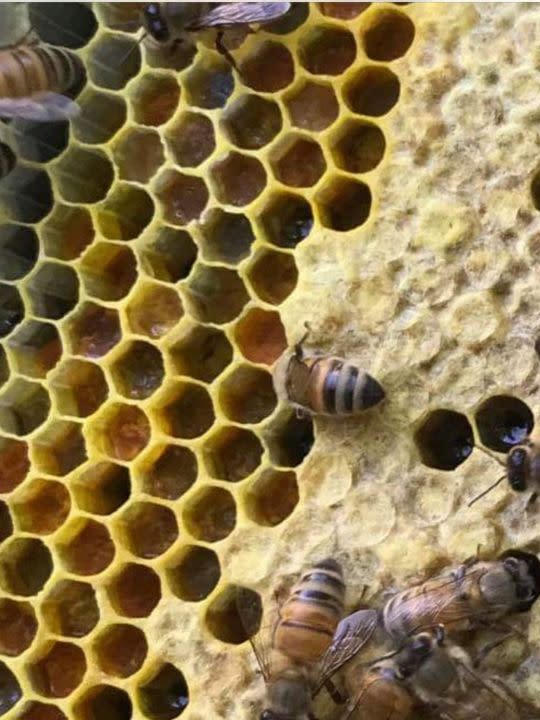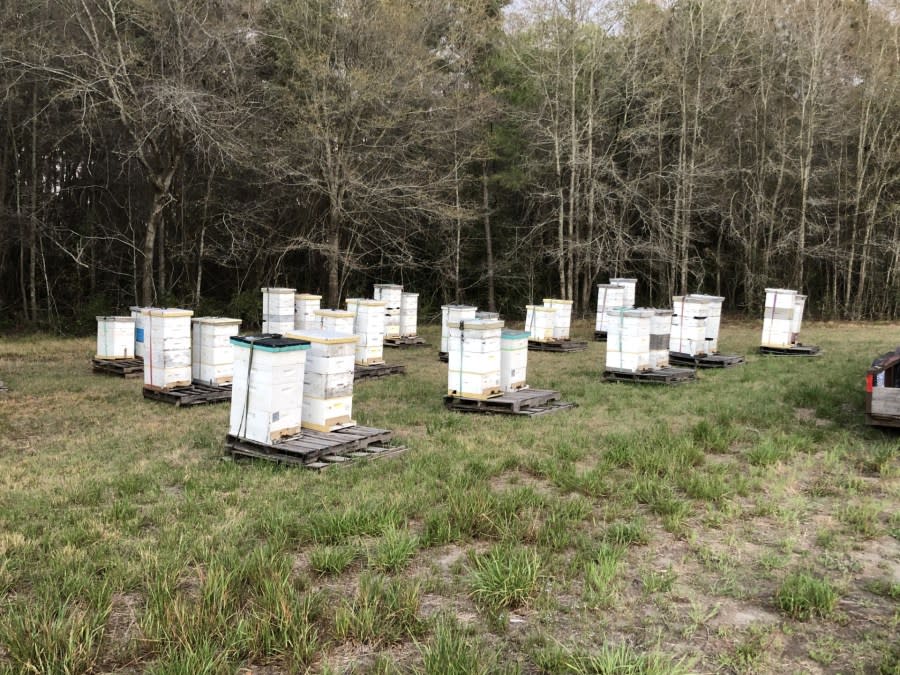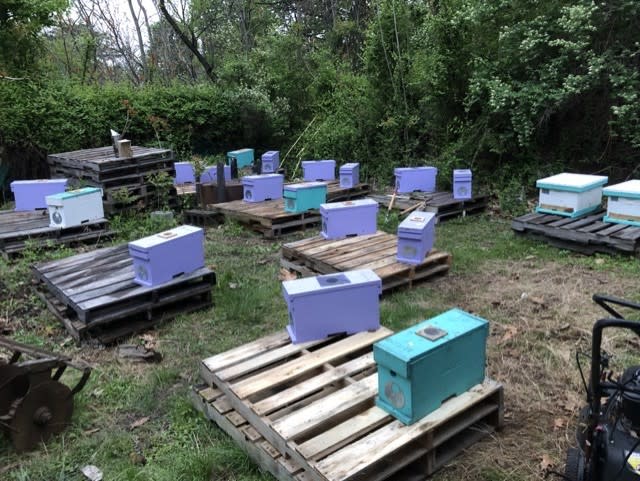Perry County bee farm doing its part to ‘save the bees’
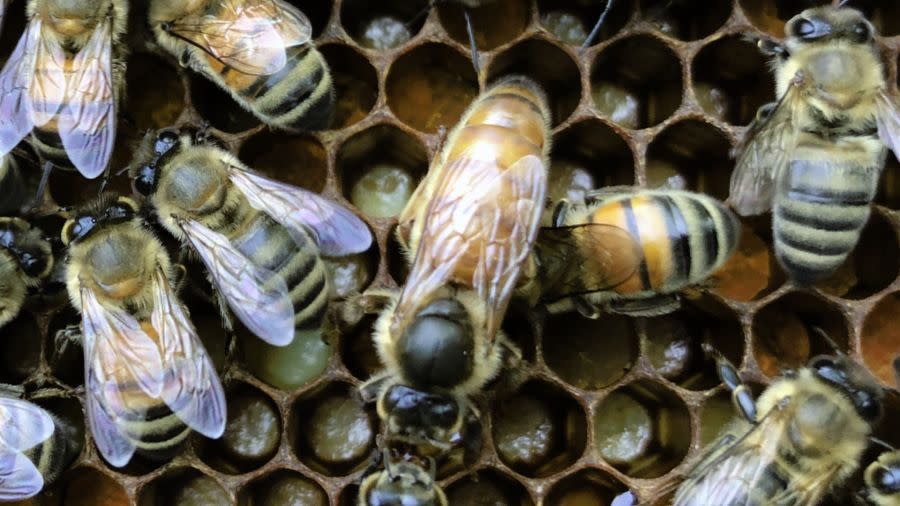
PERRY COUNTY, Pa. (WHTM) – May 20 is World Bee Day but the owners of Honey in the Hollow Bee Farm in Newport are about the bees every day.
“It started out because Glenn loves bees,” said Sue Scott, one of the owners of Honey in the Hollow. “Eventually he realized how much he loved beekeeping and the side effect of being a beekeeper is the honey.”
Glenn Scott had a friend at work that was keeping bees who gave him some equipment when Scott showed interest in the activity. Scott’s first two years of beekeeping were hard, but he eventually found success once he joined the Capital Area Beekeepers Association.
There, he met his fellow beekeeper who now works with him at Honey in the Hollow.
“The two of us usually start working at 8 o’clock in the morning and we usually work until 8 o’clock at night,” said Glenn. “We go through probably somewhere around 60 colonies in the course of a full day’s work.”
Glenn says it’s hard work. They are constantly picking up boxes of honey that weigh about 50 pounds and they’re sometimes wearing a bee suit, which makes warmer days pretty toasty.
Glenn Scott with the bees
When extracting honey, they check that the cells are full and then use a leaf blower to get the bees out. Then, Glenn uses a hot knife to cut the capping off and then breaks open the cells. He has an extractor that spins the honey out of the cones once the cells are open.
The honey is then run through a strainer and put in a tank. Finally, it is funneled out of the tank.
Cumberland County master gardener helping pollinator population
“I talk to kids a lot about bees and some of them have the misconception that taking honey from the hive hurts the bees; some people think we kill the bees when we do that,” Sue said. “There’s all kinds of misconceptions, (but) the only honey we take off of the hive is what is extra. The guys always leave enough honey so that they have enough to eat through the winter.”
Sue and Glenn decided to start Honey in the Hollow in the middle of COVID in 2020. They sell their honey and do shows throughout the year.
“We have people sampling it and they love our honey,” Sue said. “They will tell us that it’s some of the best they’ve ever tried.”
Of course, as with any job, there are complications. The biggest issue they have to combat, according to Glenn, is the varroa mite.
The pest is like a tick that attaches to honey bees.
“Most of the average people don’t understand the pests that we deal with which is the biggest reason. . .for the loss of numerous colonies,” Glenn said. “If we can keep them in check, most of the rest of the colony will do alright.”
However, they deal with another issue that is easily preventable: people spraying all the flowers on their lawns.
“Honey bees need flowers,” Glenn said. “If there’s no flowers in the area honeybees have nothing to feed on.”
Tips for planting a pollinator garden
When spring comes around, dandelions and white clovers begin covering people’s yards, which is considered a nuisance to many people. They are commonly sprayed with weed killer and other chemicals that either kill the flowers or poison the bees who feed on them.
Glenn suggests planting pollinator-friendly flowers to cover your yard and plants that will continuously grow throughout the year. He noted that after July there isn’t much left for the honey bees to eat.
Bee on Chinese wisteria
“If you can find something that produces something for them to eat (in the) July, August, September area… those are beneficial,” Glenn said.
Honeybees aren’t on the endangered list, but they do suffer from colony collapse. It is important to preserve these colonies and the species because 35% of the world’s food crops rely on animal pollination to reproduce, according to the U.S. Department of Agriculture.
Glenn and Sue love what they do. And despite Glenn being stung typically at least once a day, the end result is worth it for them.
“(I love) seeing them produce lots of honey,” Glenn said. “Seeing them (have) nice, big, (and) strong colonies that are producing lots of honey.”
Honey in the Hollow Bee Farm Honey in the Hollow Bee Farm
Copyright 2024 Nexstar Media, Inc. All rights reserved. This material may not be published, broadcast, rewritten, or redistributed.
For the latest news, weather, sports, and streaming video, head to ABC27.
